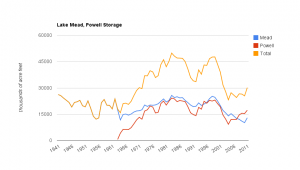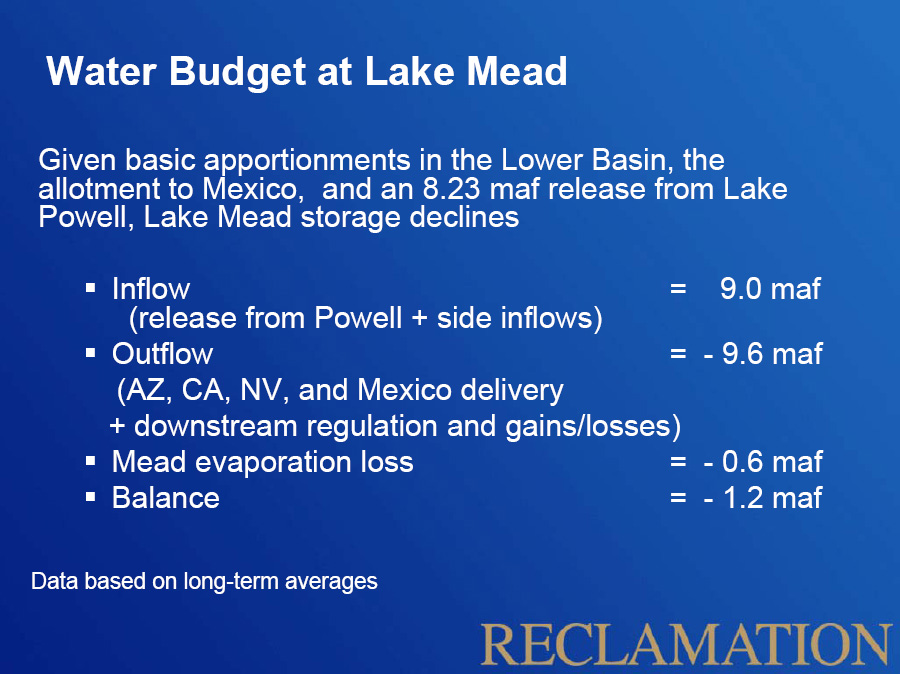The latest USBR monthly Colorado River is out, and just wow. From Shaun McKinnon:
In its latest 24-month report, the U.S. Bureau of Reclamation added almost 1 million acre-feet to the estimated amount of water that will be released from Lake Powell downstream into Mead, the wetter forecast possible because of near-record snowpack on the upper Colorado system.
This is unquestionably good news. And yet there’s something disconcerting about the numbers that should give us pause.
First the good news:
The current estimated year-end storage in Mead and Powell, the Colorado’s two main reservoirs, is now estimated at 30 million acre feet, up nearly 5 maf from last Oct. 1. Back then, Mead had dropped to record low levels, and there was talk of the first ever formal shortage declaration on the Colorado River as early as 2012. Shaun reports that now “no shortage is likely for at least five or six years, probably longer.” Mead would end the year under the current forecast with a surface elevation of 1,115 feet above sea level, the highest it’s been since 2006. Powell would be up to 3,650, its highest since 2001.
Now the disconcerting part:
Under the Colorado River Compact and related “Law of the River” accretion of laws and operating procedures, the Lower Basin is legally entitled to a delivery of 8.23 maf each year, to be released from Lake Powell for water users in Nevada, Arizona and California. If there is extra, either because it snowed like hell or because the Upper Basin states aren’t using their full allotment, the Lower Basin states can get extra, “bonus” water.
This year, according to the latest 24-month study, there’s enough slopping around in the system for a Lake Powell release of 12.46 maf, the largest since 1998. That’s 4.23 million of acre feet of bonus water. But the year end storage in Lake Mead is estimated to rise only 2.78 maf from last year. That disparity is evidence that the Lower Basin is continuing to live beyond its means – that is, beyond the 8.23 maf that it can legally count on over time in deliveries from Lake Powell. As you can see from the slide, the supply-demand imbalance averages about 1.2 maf per year in the Lower Basin.
So good news, yes, but the bonus water could be gone in a hurry.
(see here for my review of the supply-demand problem)


